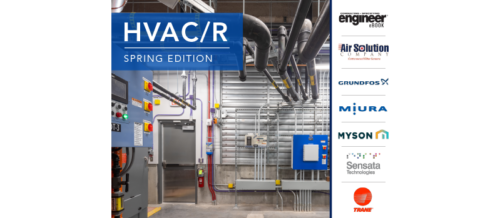Educational experience: Codes, standards in K-12 schools
Engineering work on K-12 schools is complex—and not just because of dwindling school budgets. The facilities must meet a broad range of exacting standards coming from officials and state regulatory bodies, in addition to meeting energy efficiency standards. An overview of codes and standards follows.
Participants
- Robert J. Linder, PE, LEED AP, Senior Project Manager, Karges-Faulconbridge Inc., St. Paul, Minn.
- Robert N. Roop, CPD, LEED AP, Principal, Peter Basso Associates, Inc., Troy, Mich.
- Abbas Shirian, PE, CGD, LEED AP, Principal-in-Charge, Lead Mechanical Engineer, Bridgers & Paxton Consulting Engineers, Albuquerque, N.M.
CSE: What codes, standards, or guidelines do you use as a guide as you work on these facilities?
Roop: Our designs comply with or exceed all state and local codes as well as other recognized standards of care set forth in publications by organizations such as ASHRAE, American Society of Plumbing Engineers, and NFPA. We also apply judgment to some minimum requirements or performance standards in these guidelines and, at times, use values in excess of the minimum values to increase occupant comfort or system performance.
Shirian: For energy efficiency projects we use ASHRAE Standards 90.1, 62.1, and 55. We are beginning to use ASHRAE Standard 189 for high-performance projects and Advanced Energy Design Guides for specialty building types. Labs21 also offers excellent guidance for various system types when designing lab buildings. The American Institute of Architects’ new energy modeling guide is a guide we are recommending to our architectural clients, and we commend the USGBC for creating a guide for energy modeling. We continually reference the International Building Performance Simulation Association’s (IBPSA) BEMbook for energy modeling.
CSE: How have Energy Star, ASHRAE, U.S. Green Building Council, or other guides affected your work on K-12 schools? What are some positive/negative aspects of these guides?
Shirian: For K-12 schools, LEED and USGBC have been influential in creating a framework for integrated low-energy design, and ASHRAE has allowed for a means to standardize a process for evaluating and designing associated systems. While these organizations seem to complement one another, various LEED credits potentially introduce energy-efficiency penalties as part of the LEED rating system. For instance, obtaining credit for increased ventilation introduces additional HVAC load on to a building, potentially increasing annual energy expenditures. And while ASHRAE Standard 90.1 includes excellent metrics for evaluating building performance, larger buildings using traditional variable air volume (VAV) systems typically incur additional HVAC costs in order to exceed energy performance of a baseline VAV system. Energy Star is becoming a more influential standard in building design and construction, offering a benchmark for certification based on actual energy use in lieu of predicted, like the new construction LEED rating systems require. All schools funded by the state of New Mexico shall be designed in compliance with State Energy Efficiency Standards for Public Buildings and shall be qualified for the Environmental Protection Agency’s (EPA) Energy Star.
Linder: These programs have done a great job of highlighting the value of quality engineering practices. However, the costs associated with certification have a large impact on project budgets. We are finding that school districts are still designing and constructing to the sustainable program standards but are moving away from formal submittal for certification.
Roop: The increased awareness of energy conservations programs and high-performance building designs by K-12 school districts and boards has made these items priorities in our designs. We have seen these initiatives embraced by the K-12 school market faster than by other market sectors because their primary funding source is through public dollars. In an effort to demonstrate their good stewardship of the trust of the public, districts often push to be as energy conscious as possible. To that end, we have worked with several local districts to gain Energy Star rating for all district facilities. We have also been the engineer of record for three comprehensive high school buildings which have received LEED Silver.
CSE: Which code/standard proves to be most challenging in such facilities?
Roop: Early versions of LEED were more difficult to apply to K-12 buildings than other building types in some respects due to the use and function types, which vary widely between buildings. Later revisions of the standard have included more building-specific type criteria, which are more applicable to K-12 building types and functions.
Do you have experience and expertise with the topics mentioned in this content? You should consider contributing to our CFE Media editorial team and getting the recognition you and your company deserve. Click here to start this process.





